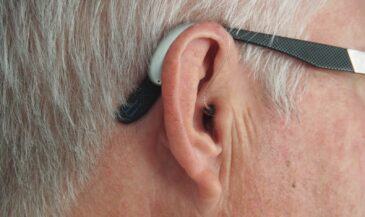By Dr. Christopher Kent
In its 100 years of existence, the chiropractic profession has been serving patients of all ages. In recent years, however, some D.C.s have found that a number of insurance companies object to paying for the care of children involved in automobile accidents.
Of course, no rational basis for these denials is offered. The onus is placed on the D.C. to support the clinical necessity for the care. I have even seen letters from insurers arbitrarily denying care for any child under 12 years of age. This column will review literature which supports the existence of accident-induced subluxations.
Orenstein, et al, did a retrospective chart review involving 73 children who presented at a children’s hospital with cervical spine injuries. 67% of these injuries were traffic-related, resulting from motor vehicle crashes. The injured children were passengers in an automobile, pedestrians, or bicyclists. The mean age of the patients surveyed was 8.6 years, with bimodal peaks at 2 to 4 and 12 to 15 years.
The authors noted that younger children sustained more severe injuries than older children. Distraction and subluxation injuries were the most common injuries in children aged eight years and younger. Fractures were more common in older children. [1]
Glass, et al, evaluated 35 children with lumbar spine injuries following blunt trauma. 31 of these children were injured in motor vehicle crashes. Abnormalities noted on plain radiographs and CT scans included subluxation, distraction, and fracture alone or in combination.
The authors stated, “Children involved in motor vehicle crashes are at high risk for lumbar spine injuries…Lumbar spine radiographs are necessary in all cases with suspected lumbar spine injury…” [2]
This paper underscores the need to evaluate the entire spine in cases of motor vehicle accidents, not just the cervical region. It may be cited when claims for lumbar radiographs are questioned in cases of children involved in car accidents.
Rachesky, et al, reported that on the cervical spine radiographs of children under 18 they examined, vehicular accidents accounted for 36% of radiographic abnormalities. It was further stated that clinical assessment of a complaint of neck pain OR involvement in a vehicular accident with head trauma would have identified all cases of cervical spine injury. [3]
Other authors have described aspects of cervical spine injuries in children involved in motor vehicle accidents.
Hill, et al, noted that 31% of the pediatric neck injuries reviewed were the result of motor vehicle accidents. In younger children (under 8 years of age) subluxation was seen more frequently than fracture. [4]
Agran stated that noncrash vehicular events may cause injuries to children. Noncrash events discussed in this paper included sudden stops, swerves, turns, and movement of unrestrained children in the vehicle. [5]
Roberts, et al, described a case where a child involved in a motor vehicle accident sustained a “whiplash” injury resulting in immediate neck and back pain. Neurobehavioral abnormalities increased in the two year period following the accident. Four years after the accident, symptoms persisted. Positron emission tomography (PET scan) demonstrated evidence of brain dysfunction. [6]
The clinical manifestations of pediatric cervical spine injury may be diverse.
Biedermann stated that a wide range of pediatric symptomatology may result from suboccipital strain. The disorders reported include fever of unknown origin, loss of appetite, sleeping disorders, asymmetric motor patterns, and alterations of posture. [7]
Gutmann also discussed the diverse array of signs and symptoms which can occur as a result of biomechanical dysfunction in the cervical spine. [8]
In the chiropractic literature, Clow published a paper addressing pediatric cervical acceleration/deceleration injuries. [9]
In conclusion, it is reprehensible that a handful of “doctors of the evening” would sell their dubious “opinions” to insurers, thus denying children needed chiropractic care.
Most chiropractic college libraries can provide copies of the papers featured in this column for a modest fee. Chiropractors faced with insurance denials by self-proclaimed “experts” would be wise to obtain them. Armed with intellectual ammunition, D.C.s providing services to children injured in motor vehicle accidents should have little difficulty supporting their position.
References
1. Orenstein JB, Klein BL, Gotschall CS, et al: “Age and outcome in pediatric cervical spine injury: 11-year experience.” Pediatr Emerg Care (1994 Jun) 10(3):132.
2. Glass RB, Sivit CJ, Sturm PF, et al: Lumbar spine injury in a pediatric population: difficulties with computed tomographic diagnosis. J Trauma (1994 Nov) 37(5):815.
3. Racheskey I, Boyce WT, Duncan B, et al: “Clinical prediction of cervical spine injuries in children. Radiographic abnormalities.” Am J Dis Child (1987 Feb) 141(2):199.
4. Hill SA, Miller CA, Kosnik EJ, Hunt WE: “Pediatric neck injuries. A clinical study.” J Neurosurg (1984 Apr) 60(4):700.
5. Agran PF: “Motor vehicle occupant injuries in noncrash events.” Pediatrics (1981 Jun) 67(6):838.
6. Roberts MA, Manshadi FF, Bushnell DL, Hines ME: “Neurobehavioral dysfunction following mild traumatic brain injury in childhood: a case report with positive findings on positron emission tomography (PET). Brain Inj (1995 Jul) 9(5):427.
7. Biedermann H: “Kinematic imbalances due to suboccipital strain in newborns.” Manual Medicine (1992) 6:151.
8. Gutmann G: “Blocked atlantal nerve syndrome in infants and small children.” ICA Review (1990) 46(4):37.
9. Clow BJE: “Pediatric cervical acceleration/deceleration injuries.” Journal of Clinical Chiropractic Pediatrics (Jan 1996) 1(1):36.






























































































































































